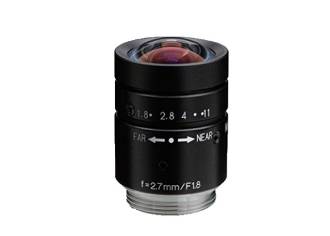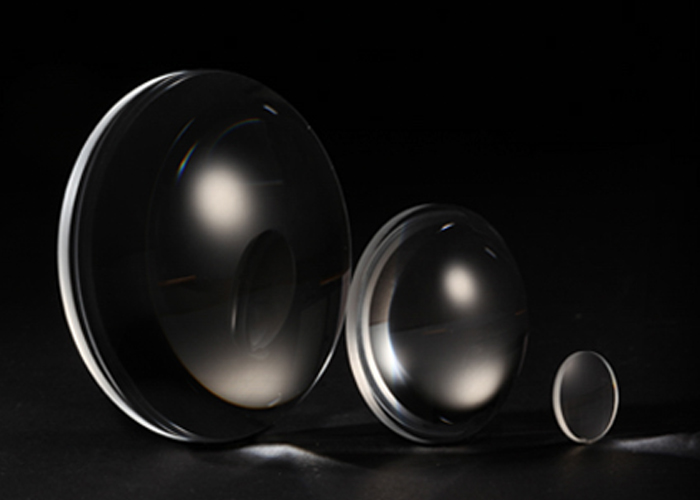four. The key factor affecting imaging-aberrations
Due to objective conditions, no optical system can generate a theoretically ideal image, and the presence of various aberrations affects the imaging quality. Various aberrations are briefly introduced below.
1. Chromatic aberration
Chromatic aberration is a serious defect of lens imaging. It occurs when monochromatic light is used as the light source. Monochromatic light does not produce chromatic aberration. White light consists of seven types: red, orange, yellow, green, blue, and violet. The wavelengths of various lights are different, so the refractive index when passing through the lens is also different. In this way, a point on the object side may form a color spot on the image side. The main function of the optical system is achromatic.
Chromatic aberration generally has positional chromatic aberration and magnification chromatic aberration. Positional chromatic aberration makes the image appear stained or haloed at any position, making the image blurred. And the chromatic aberration of magnification makes the image with colored edges.
2. Spherical aberration
Spherical aberration is a monochromatic phase difference between points on the axis and is caused by the spherical surface of the lens. The result of spherical aberration is that after a point is imaged, it is no longer a bright spot, but a bright spot with gradually blurred middle bright edges, which affects the imaging quality.
The correction of spherical aberration is usually eliminated by using a combination of lenses. Since the spherical aberration of convex and concave lenses is opposite, the convex and concave lenses of different materials can be glued together to eliminate it. The spherical aberration of the objective lens of the old model is not completely corrected, and it should be matched with the corresponding compensation eyepiece to achieve the correction effect. The spherical aberration of the general new microscope is completely eliminated by the objective lens.
3. Coma
The coma is a monochromatic aberration at off-axis points. When the off-axis object point is imaged with a large-aperture beam, the emitted light beams no longer intersect after passing through the lens, and the image of a light point will get a comma-like shape, so it is called "coma".
4. Astigmatism
Astigmatism is also a monochromatic aberration at off-axis points that affects sharpness. When the field of view is large, the object point on the edge is far away from the optical axis, and the beam tilt is large, which causes astigmatism after passing through the lens. Astigmatism makes the original object point become two separate and perpendicular short lines after imaging. After being integrated on the ideal image plane, an oval spot is formed. Astigmatism is eliminated by complex lens combinations.
5. Curvature of field
Field curvature is also called "image field bending". When the lens has a field curvature, the intersection point of the entire beam does not coincide with the ideal image point. Although a clear image point can be obtained at each specific point, the entire image plane is a curved surface. In this way, the entire image plane cannot be seen at the same time during the microscopy, which makes it difficult to observe and take pictures. Therefore, the objectives of research microscopes are generally flat-field objectives, which have been corrected for field curvature.
6. Distortion
In addition to the field curvature, the various aberrations mentioned above all affect the sharpness of the image. Distortion is another type of aberration, and the concentricity of the beam is not damaged. Therefore, it does not affect the sharpness of the image, but causes the image to be distorted in shape compared to the original object.
4. Principle of Imaging (Geometric Imaging) of Microscope
The microscope objective supplier believes that the reason why the microscope can magnify the object to be inspected is through the lens. Single lens imaging has aberrations, which seriously affects imaging quality. Therefore, the main optical components of the microscope are composed of lenses. From the performance of the lens, it can be seen that only convex lenses can magnify, while concave lenses cannot. Although the objective lens and eyepiece of a microscope are combined by a lens, they are equivalent to a convex lens. In order to understand the magnification principle of the microscope, the five imaging rules of convex lenses are briefly explained:
(1) When the object is outside the focal length of the lens, it will form a reduced inverted real image within the focal length of the image side and out of focus;
(2) When the object is located at the focal length of the lens twice, an inverted real image of the same size is formed at the focal length of the image twice;
(3) When the object is located within the focal length of the lens object and is out of focus, an enlarged inverted real image is formed outside the focal length of the image side;
(4) When the object is located on the focal point of the lens, the image cannot be imaged;
(5) When the object is located within the focal point of the object side of the lens, no image is formed on the image side, and an enlarged upright virtual image is formed on the same side of the lens object side than the object.

Microscope Objective
The imaging principle of the microscope is to use the laws of (3) and (5) above to enlarge the object. When the object is between F-2F (F is the focal length of the object side) in front of the microscope objective, an enlarged inverted real image is formed beyond the focal length of the objective mirror side. In the design of the microscope, this image falls within one focal length F1 of the eyepiece, so that the first image (intermediate image) magnified by the objective lens is magnified again by the eyepiece, and finally at the object side of the eyepiece (intermediate image) Ipsilateral side), and the human eye forms a magnified upright (relative to the intermediate image) virtual image at the apparent distance (250mm) of the human eye. Therefore, when we are in the microscopy, the image seen through the eyepiece (without additional conversion prism) is the same as the image of the original object in the opposite direction.
Fives. Introduction to Microscope Optical System
There are three types of optical systems for microscope optical systems.
1. Long barrel optical system
2. Universal infinity correction optical system: It is a more advanced optical path design, which reflects the superiority of the infinity correction method. After the light passes through the objective lens, it becomes a parallel beam that passes through the lens barrel and is refracted at the junction lens or completes an intermediate image without aberration. Optical accessories can be added between the objective lens and the imaging lens in the observation tube without affecting the total magnification. In addition, this optical system can obtain the best microscopic image without installing additional correction lens.
3. Universal infinity dual chromatic aberration correction optical system: It is the most advanced optical path design at present, which can not only correct position chromatic aberration, but also correct magnification chromatic aberration. It can improve the horizontal resolution by 12%, providing the highest contrast, highest contrast, and highest resolution. The sharpest image.













